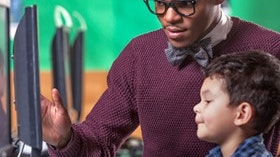Homepage
•
Learning Library
•
Blog
•
The path to personalized learning
Expand breadcrumbs
Expand breadcrumbs
- Learning Library
- Blog
- The path to personalized learning
- Homepage
- •
- Learning Library
- •
- Blog
- •
- The path to personalized learning
The path to personalized learning
By Lizzie Choi
February 1, 2017








